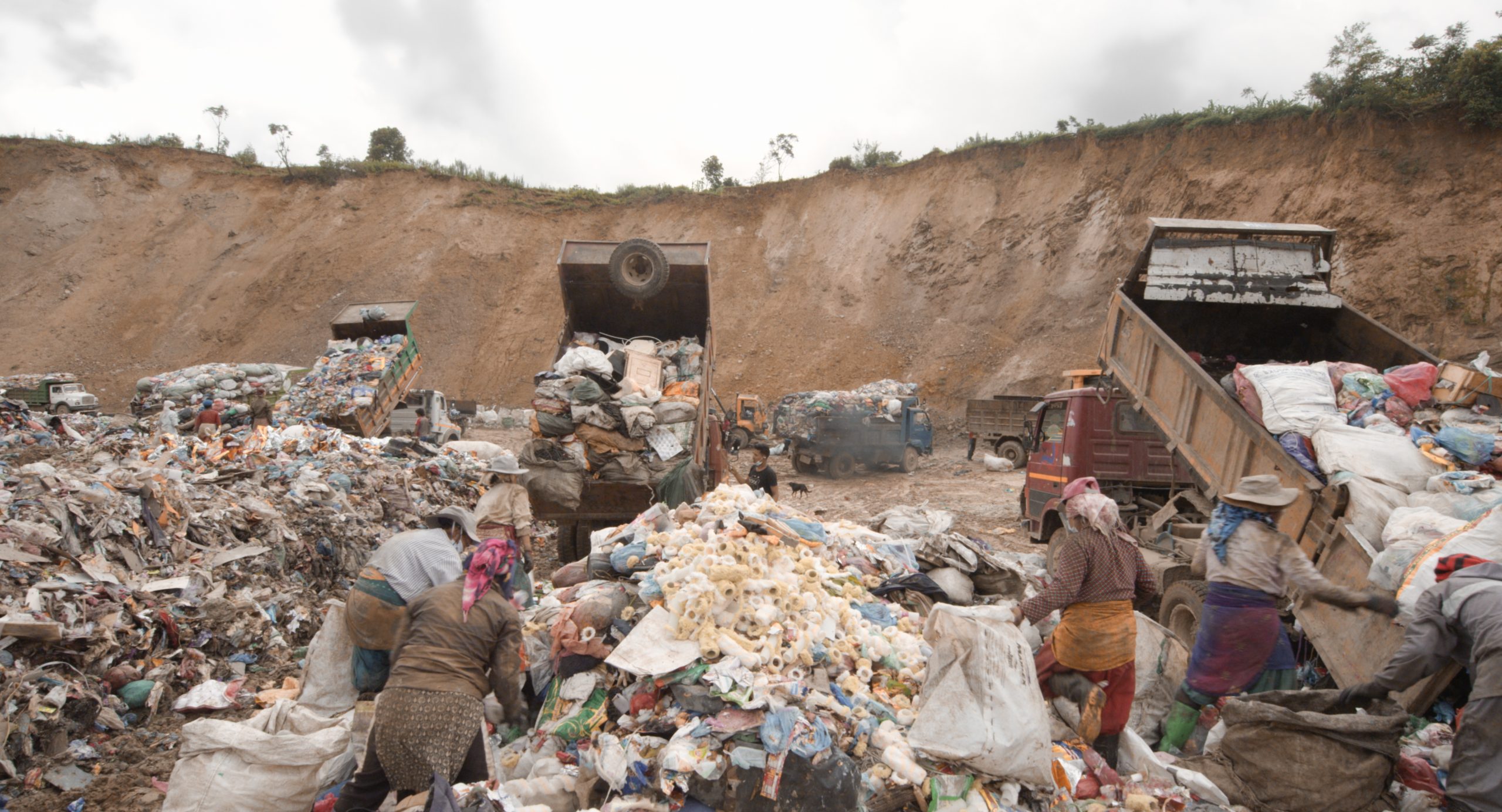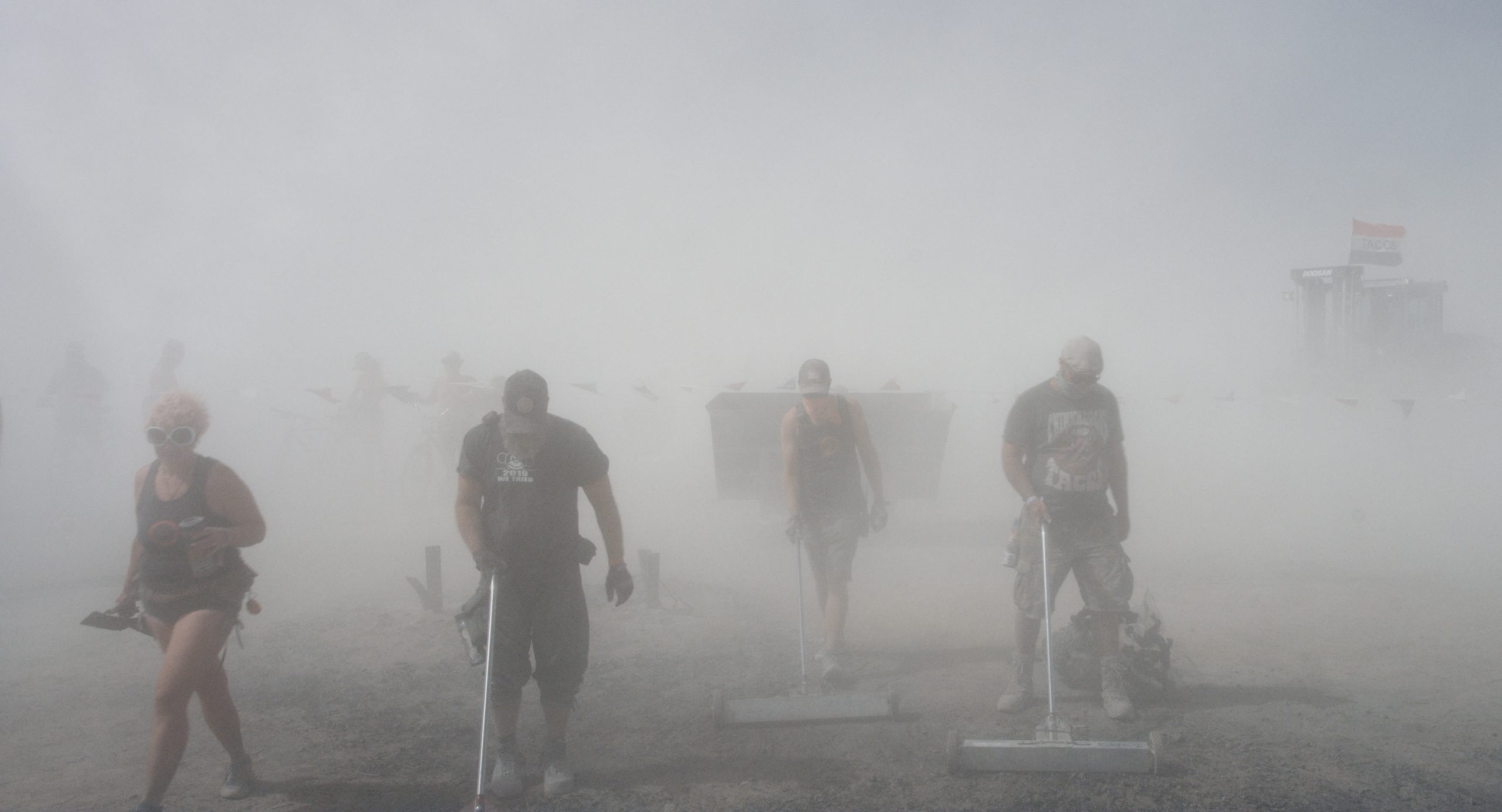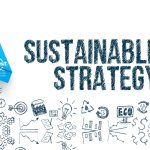Out of Sight, Out of Mind: Actionable Business Insights from Waste-Focused Documentary
– July 20, 2023 –
While Barbie and Oppenheimer are the talk of the town regarding the summer movie season, don’t let the smaller ones with valuable takeaways for business owners fall under the radar.
One such film is the newly-released documentary Matter Out of Place, a multi-part study of how humankind around the globe handles its waste. Rather than engage viewers with the typical talking-heads approach or voice narration, this work primarily consists of long, static shots sans music or commentary. The images speak for themselves, without any true agenda other than capturing the reality of waste and how it’s managed or ignored.
Review our collected insights below to see if they bring awareness or spark new ideas for your company’s operations and programs.

A scene in ‘Matter Out of Place’ showing a town disposing of their waste in a landfill. Courtesy of © Nikolaus Geyrhalter Filmproduktion GmbH.
Waste: Keep in Sight, Keep in Mind
Early in Matter Out of Place, there’s a moment when the adage “out of sight, out of mind” is uttered by a landfill researcher as an excavator digs into a neighborhood field. During the long take, we witness a seemingly harmless, stark area reveal massive amounts of waste buried just a few feet under its surface. Tires, oil cans, and glass accompany the soil used for agricultural purposes, such as growing potatoes; thus, bringing anything but comfort when thinking about where food manufacturers and grocery stores get their supplies.
“Out of sight, out of mind” often becomes the mentality when businesses handle and dispose of their waste: “If it’s swept under the rug, it’s not a problem.” The reality is it becomes a problem for later or someone else. The belief that productivity is more achievable if waste is entirely off the board rather than managed is damaging – as the film further illustrates when it examines how cultures as disparate as Albania, the Maldives, Nepal, and Switzerland dispose of their waste.

A scene in ‘Matter Out of Place’ showing the lengthy process for disposing of waste in a snowy location. A garbage truck must take a ski lift up and down the mountain on waste haul days. Courtesy of © Nikolaus Geyrhalter Filmproduktion GmbH.
What Are the Bad Habits Visible in Matter Out of Place’s Stillness?
- Riverbanks – The film’s opening image is a majestic view of snowy mountains and water streams. The subsequent image is a close-up of the riverbanks populated with bottles, plastic bags, and various other environmentally harmful items.
- Beach Resorts – This time, compared to the riverbank sequence, the two shots are flipped with the white sands beach location starting on a tighter framing to capture the beauty of a private beach. The subsequent image is of the framing widened to show waste on the shoreline, just outside the resort.
- Mountains – This particular area’s town transfers all its waste to a dumping ground halfway up a mountain. It’s an open trash land that’s free to allow rainwater to wash bacteria and other hazardous substances down the mountainside to the city and wildlife populations below.
Framing Reality: Each location examined in the film displays the “out of mind, out of sight” behavior. It all comes down to how the environments in cities, parks or at businesses are framed. A wide shot of the mountains is a scenic picture, but when narrowing the view to look at the details, the truth is revealed.
Same with the beach resort sequence in the film: the camera backs up to reveal the most cared about parts of the beach are the most profitable ones. Who’s to say that those surrounding regions won’t push the animals and plant life out that keeps the “profitable” areas thriving? You can’t slap a Band-Aid on and expect it to hold. Eventually, the levee will break, and the consequences will be painful.

A scene in ‘Matter Out of Place’ showing volunteers working together to collect all waste following a festival event. Courtesy of © Nikolaus Geyrhalter Filmproduktion GmbH.
Our Suggestion: How the problem relates to companies (like yours) is electing only to treat the pain points, not the entire system. There’s an operational ecosystem with a workplace, and waste plays a monumental role. Suppose an enterprise evaluates what it takes in, sells, and disposes of. In that case, it can develop an efficient flow that can focus better on storefront operations while reaching a level of sustainability that aligns with customer demands, environmental needs, and state/local requirements.
Why purchase an item packaged with environmentally harmful material that may take up more space on the floor (with hefty shipping fees) and is more difficult to break down and dispose of? That’s added time, responsibilities, and (possibly) expenses. This is where a waste audit comes in to provide the information needed to plan, execute, and measure through reporting and tracking.
Efficiency isn’t always achieved through removal. By merely removing waste and adding it to a landfill (or any other disposal forms, as featured in the documentary), it’s taking away from space that could be used for something else while also causing more resources to be collected to make new products. It throws ecosystems off balance and could set off chain reactions.
If more businesses familiarize themselves with their waste processes (like Matter Out of Place details with its extended stretches of various locations disposing of waste), it may create the understanding to influence change, which, in turn, can provide a competitive edge.









